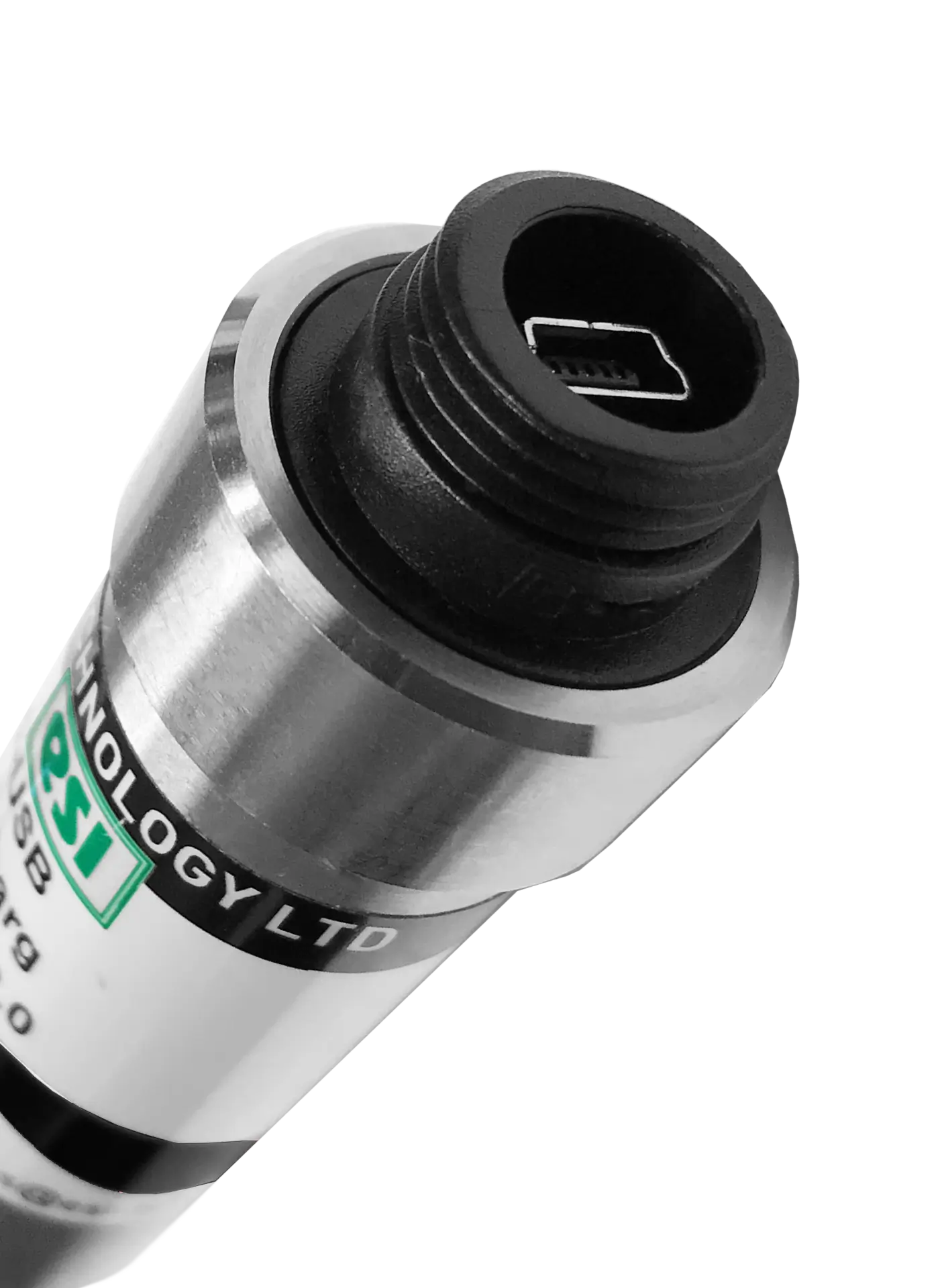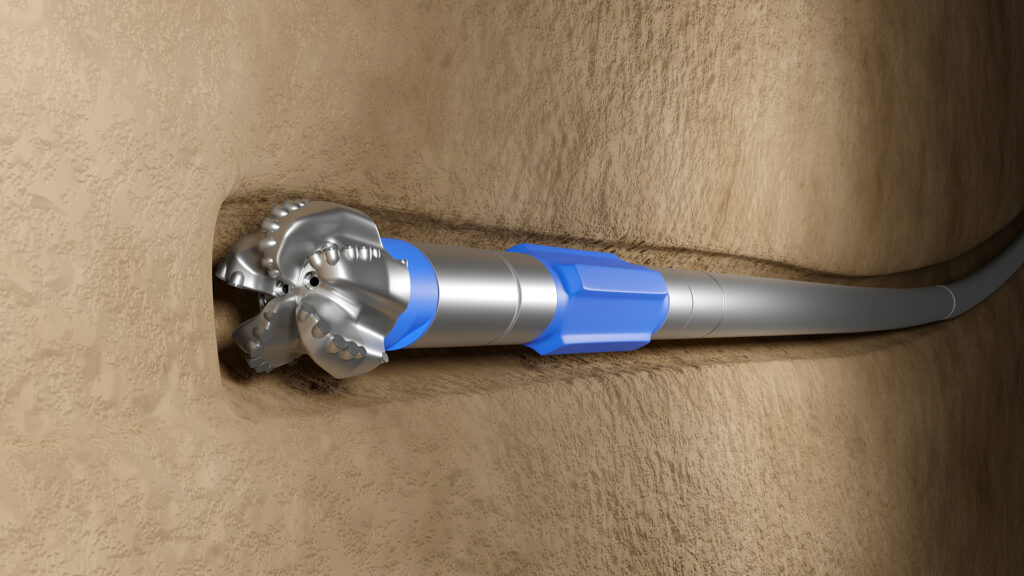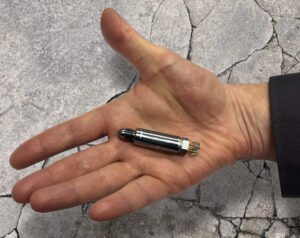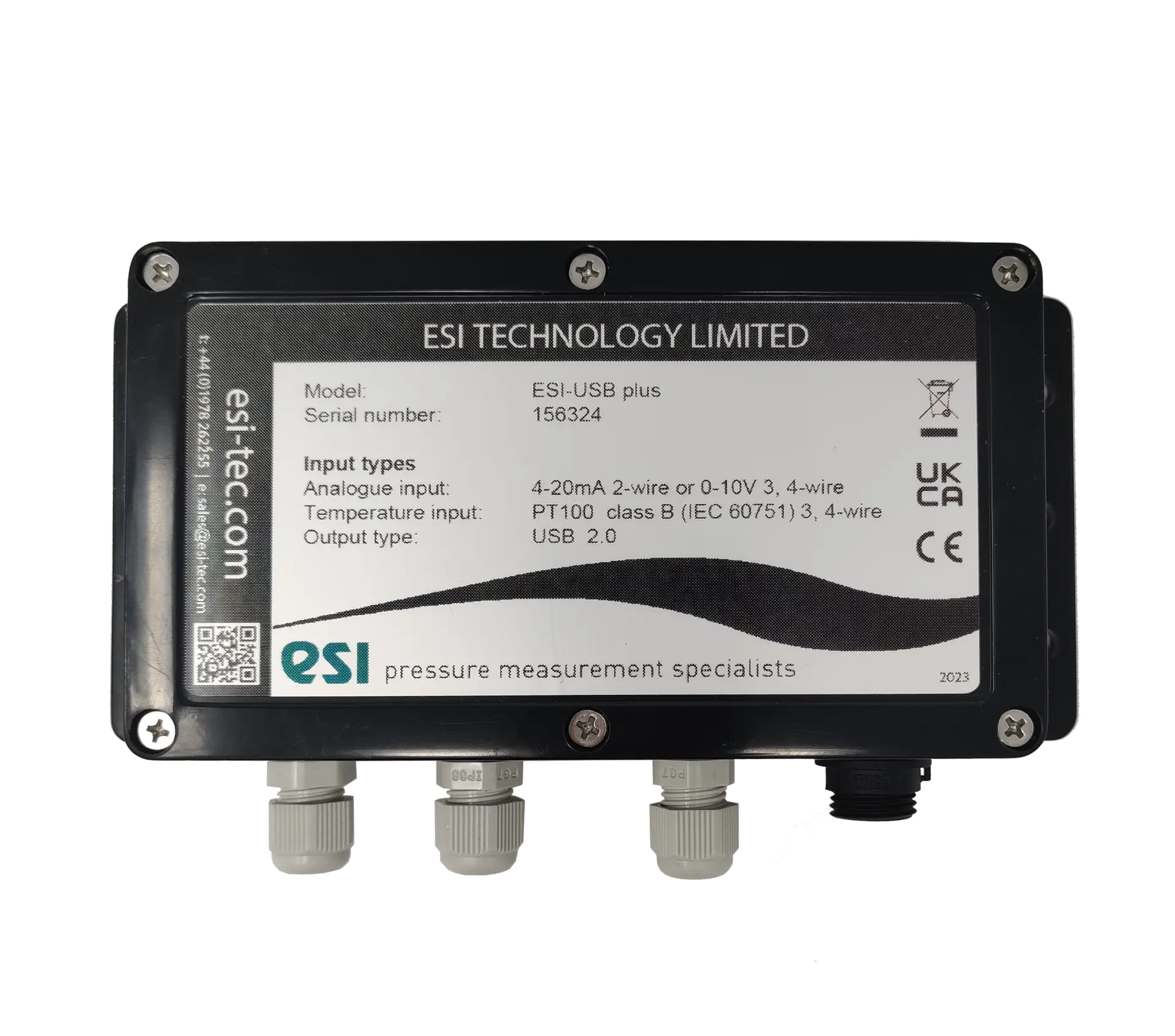Our Unit Converter
The ESI Unit converter allows you to quickly and easily access a conversion tool to work out your preferred unit of pressure measurement wherever you may be. Whether out on-site or in the office.

Download the ESI-USB© Software
The ESI-USB© software allows you to connect your ESI transducer to your laptop or PC and be up and running monitoring pressure data within ten minutes. The software auto-updates and is compatible with Windows 8, 10 & 11.

The HI5000 Downhole Pressure Transmitter – Optimising Lubricant Monitoring in Downhole Drill-Heads
In the challenging and often extreme conditions of downhole drilling, accurate pressure monitoring is essential for maintaining efficiency, safety, and equipment longevity. One critical aspect of this is the precise measurement of lubricant pressure within the drill-head—a task that demands highly reliable and robust sensing technology. The HI5000 Downhole Pressure Transmitter from ESI Technology Ltd is engineered for optimising lubricant monitoring in downhole drill-heads and meets the exacting requirements, offering unparalleled performance in the most hostile environments.
The Downhole Environment
Downhole drilling—whether for oil, gas, or geothermal exploration—exposes tools and sensors to high temperatures, extreme pressures, and chemically aggressive media. The lubricant used in the drill-head plays a vital role in reducing friction, cooling components, and protecting moving parts from wear and damage. If lubricant pressure drops unexpectedly or rises beyond safe limits, it can result in equipment failure, inefficient drilling, or even catastrophic tool damage. As such, real-time and reliable pressure monitoring of the lubricant system is not optional—it’s essential.
The HI5000
The HI5000 Pressure Transmitter has been purpose-built to meet the demands of downhole and subsea drilling applications. Designed and manufactured in the UK by ESI Technology Ltd, this transmitter is part of a product family that leverages Silicon-on-Sapphire (SoS) sensor technology, renowned for its exceptional accuracy, stability, and resilience under extreme conditions.
This transmitter is particularly well-suited to measuring lubricant pressure within the drill-head, where conditions can reach pressures of up to 1,500 bar and temperatures exceeding 200°C. The HI5000 excels in these conditions thanks to its:
-
High temperature capability: Designed to operate continuously up to 225°C, making it ideal for extended drilling cycles.
-
Excellent chemical compatibility: Constructed from robust stainless steel and NACE-approved titanium alloy, the transmitter resists corrosion and degradation from drilling fluids and lubricants.
-
Stability under pressure: The SoS sensor maintains high accuracy even under rapidly fluctuating and high-pressure conditions.
NACE-Approved Titanium Alloy: Corrosion Resistance in Harsh Environments
One of the standout features of the HI5000 is its construction using NACE-approved titanium alloy, a material specifically selected for its exceptional resistance to corrosion in sour gas and hydrogen sulphide (H₂S) environments. The National Association of Corrosion Engineers (NACE) sets industry standards for materials used in corrosive oilfield environments, and compliance with these standards ensures equipment longevity and safety in critical applications.
In downhole operations, lubricants are often exposed to chemically aggressive compounds such as H₂S, brine, and various drilling fluids. Titanium alloy not only offers excellent strength-to-weight ratio but also prevents material degradation, pitting, and stress-corrosion cracking under these conditions. This is crucial when monitoring lubricant pressure, as corrosion-related damage to the sensor body could result in:
-
Measurement drift or failure
-
False readings that compromise system safety
-
Leaks and loss of hermetic integrity
By using NACE-compliant materials, ESI Technology ensures the HI5000 provides long-term reliability and accurate performance in the most chemically aggressive environments, giving operators confidence in both data integrity and operational safety.
Real-Time Lubrication Insights
By integrating the HI5000 into the lubrication circuit of the drill-head, operators gain the ability to monitor lubricant pressure continuously and in real time. This provides several operational advantages:
-
Immediate anomaly detection, such as pressure drops from leaks, pump faults, or seal failure.
-
Predictive maintenance through pressure trend analysis, helping prevent costly mechanical failures.
-
Optimised lubricant delivery, ensuring ideal conditions for bearings, seals, and rotating components.
The HI5000’s output can also be seamlessly integrated into Measurement While Drilling (MWD) or Logging While Drilling (LWD) systems, enabling remote and centralised monitoring from surface control rooms.
Built for Reliability
Reliability is non-negotiable when sensors are deployed thousands of feet below the Earth’s surface. The HI5000 is built with a hermetically sealed design and integrated electronics, eliminating the need for separate signal conditioning and reducing potential failure points.
The HI5000 from ESI Technology Ltd is more than a pressure sensor—it’s a critical enabler of safe, efficient, and productive drilling operations. By delivering precise lubricant pressure measurements in the harshest conditions, it helps protect valuable equipment, reduce downtime, and support seamless drilling performance.
As energy exploration continues to push further into ultra-deep and corrosive territories, the demand for rugged, intelligent instrumentation like the HI5000 will continue to grow. With its advanced SoS technology, NACE-approved materials, and industry-proven durability, the HI5000 stands out as a trusted pressure sensing solution in modern downhole drilling systems.




